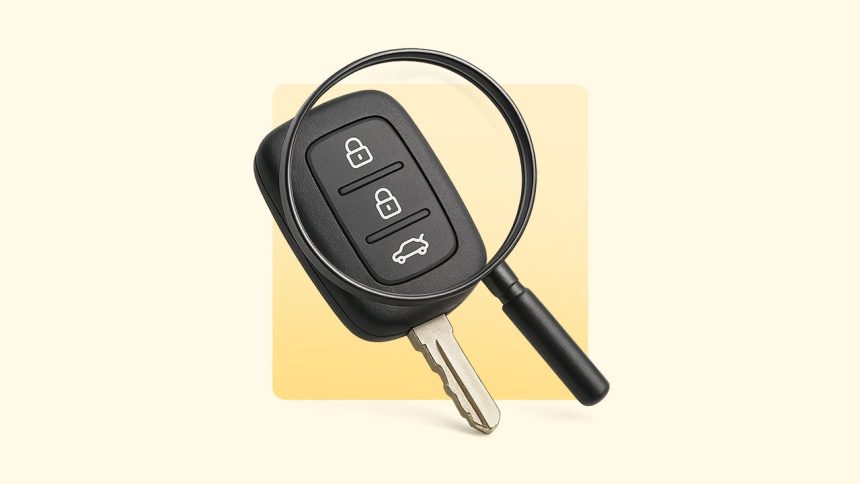Key takeaways
- While vehicle thefts have decreased, you still need to take steps to ensure you aren’t buying one of them.
- Check the VIN, buy a vehicle history report and do a title search to check for red flags before you buy.
- If you suspect a used vehicle was stolen, don’t go through with the sale — and report it to the relevant authorities, if possible.
Many drivers choose a used vehicle over a new one for its lower price tag, but be careful. Car theft spiked in the years following the start of the COVID-19 pandemic, and you don’t want to purchase a stolen ride. Thefts may have decreased by 17 percent from 2023 to 2024, according to data from the National Insurance Crime Bureau (NICB), but there were still over 850,000 vehicles stolen nationwide last year.
Proceed with caution before taking out a used auto loan to buy from a private seller or a dealership. If something feels off, shop elsewhere. There are plenty of used cars on the market.
Look out for cloned vehicles
Car cloning is when someone takes the license plate, vehicle identification number (VIN) and registration stickers from a legal car and places them on a stolen vehicle of a similar make and model.
6 steps to check if the car you’re buying is stolen
To avoid the headache of purchasing a stolen or cloned car, follow these six steps.
1. Check the VIN thoroughly
You can check the VIN with government agencies and your state’s department of motor vehicles. You can also check a car’s VIN through the NICB’s VIN Check, recommends Renee Valdes, lead editor at Kelley Blue Book. This free service can inform you if there are any insurance records of a stolen car, including a vehicle that has not yet been recovered.
“Some vehicles put the VIN inside the front driver door or on the windshield, and some owners can have the VIN etched on the window or inside the engine,” Valdes says. “Carmakers want to make it harder for thieves to steal VINs and create counterfeit ones.”
The VIN may also be stamped into the vehicle’s dashboard. Be thorough, especially with letters and numbers that look similar. Since the VIN should be in multiple places, examine each to make sure they match. If they don’t, they may have been tampered with.
2. Purchase a vehicle history report
Order a vehicle history report using the VIN, Valdes suggests. Companies offering vehicle history reports include AutoCheck or Carfax.
“These aren’t very costly, and they’re worth it,” Valdes says.
Vehicle history reports include information like:
- Service history.
- Title information.
- Liens held on the car.
- Accident history and damage.
- Previous owners.
While the report will list the number of previous owners, it won’t list their names.
“If the history is up to the present, there’s a good chance it’s well taken care of and not stolen,” Valdes says. However, if there are gaps in the history or it’s not up to date, that could be a sign that the car is stolen.
3. Do a title search
You can search for a car’s title through the National Motor Vehicle Title Information System. If the person trying to sell you the car isn’t the person listed on the title, you’ll know it’s a stolen car.
Having access to the car’s title can help you detect any discrepancies between what the seller is telling you and what’s on the title, like whether the car has a salvage title and the mileage when it was last sold.
4. Ask the seller for the vehicle’s service records
If the seller can show you maintenance receipts, there is a better chance it is not a stolen vehicle, explains Valdes. Check to see if the VIN, make and model on the receipts match the vehicle. Compare the maintenance records with the vehicle history report and see if they match.
“A car is often a consumer’s second largest purchase,” Valdes says. “I always treated my car as if I would be selling it one day, which means taking good care of your vehicle and getting regular oil changes.”
Additionally, ask to see if you can see the previous bill of sale from when the seller first purchased the vehicle. It can’t hurt to request the seller’s contact information and how much they originally bought the car for. A legitimate seller shouldn’t hesitate to provide you with this information.
5. Ask your insurance company for an inspection
Ask your auto insurance company if it’s willing to inspect a car for safety and any red flags of fraudulent activity. You should still do your own due diligence, but your insurance company may be able to find additional information to confirm that the vehicle is above board.
In addition, you should have a trusted mechanic inspect the vehicle whenever you purchase a used vehicle. Many mechanics will conduct a pre-purchase inspection, which typically costs $100 to $150. Although you may be eager to skip this step and proceed with your purchase, it can ultimately save you from major repairs and larger bills in the long run — and help catch any changes to the vehicle a thief may have made.
6. Trust your gut
If the price is too good to be true, or the seller is overly eager to sell you the car and is urging you to skip steps in the car-buying process, trust your instincts. Between other sellers and used car dealerships, there are plenty of legitimate options out there.
You may notice differences between what the seller tells you about the car and what you find out in your research. That’s not always a red flag.
Not every car owner keeps meticulous records, and if the vehicle has been bought and sold multiple times, there could be some missing information. But if you spot discrepancies with no reasonable explanation, walk away.
What to do if the car you’re buying is stolen
If you find out that the car you’re buying is stolen, file a police report. Provide your bill of sale and any pertinent documents and information. Unfortunately, if the car you’ve purchased was stolen or is a “cloned car,” it was never really yours.
This means you are not the car’s legal owner, and it will be confiscated and returned to the rightful owner. If a theft claim has already been submitted to the insurance company, the car will be transferred to the insurance company. Any money you’ve borrowed or invested in the vehicle will be a loss.
If you haven’t purchased the car yet, walk away and don’t look back, Valdes suggests. Then, when it’s safe to do so, file a police report.
Bottom line
As thieves develop more advanced tactics, stay aware of potential dangers and research the car thoroughly, Valdes says. This includes researching the VIN, ordering a vehicle history report and asking for additional documents to help you spot if the car is a stolen vehicle.
Beyond theft, there are a number of dealer tricks and scams that you should be aware of. Start by comparing auto loan rates with legitimate lenders, then shop with reputable dealerships or choose a certified pre-owned (CPO) car to minimize your risk.
Why we ask for feedback
Your feedback helps us improve our content and services. It takes less than a minute to
complete.
Your responses are anonymous and will only be used for improving our website.
Help us improve our content
Read the full article here
















